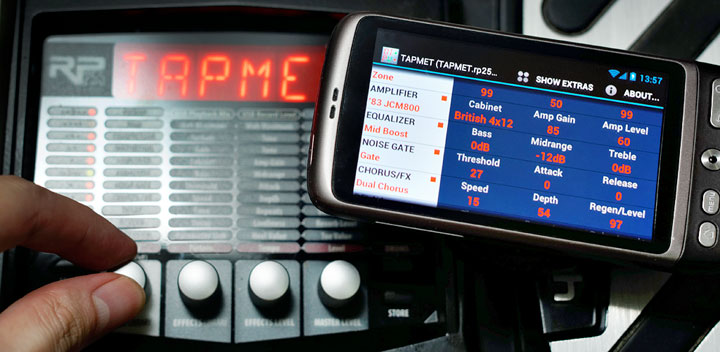(This post was edited 0209 hours 5th March 2012 +0800 GMT for Version 1.1.)
So I’ve finally uploaded my first (fully-completed) Android app to the Android Market!
This lets you open DigiTech RP155, RP250 and RP255 multi-effects patch files using your Android device.
Ever been jamming at a friend’s place, or a studio, and you wanted to dial in that certain tone, but you couldn’t get it right? Then you Googled it on your phone but you find that in order to get the tone, you need to fire up X-Edit on a proper computer or laptop, and connect the RP255 by USB?

My app lets you view the patch – you’ll still have to dial in the settings manually. For convenience, all the settings are arranged as they are on the pedal!
Now it would be awesome to connect the pedal to an Android device via USB, but I don’t have an Android device with USB Host functionality and even then that might be too daunting a task! (I don’t have a Near-Field-Communication-supporting device, either…)
The RP155 and RP250 have beta support as of version 1.1, in the Android Market now. It may not show certain values, so contact me if you find such a patch file.
The RP255 is the only one I have to test all settings with – hit me an email if you’d like to help to test with your other DigiTech RP series multi-effects pedal! Fortunately, the RP presets are all plain, human-readable XML, so it’s quite easy – can’t say the same about other brand patch files.
If you have trouble opening patch files from your stock browser, use Firefox for Android. I found the Samsung Galaxy Note stock browser, for example, will rename any unknown files to *.bin.
In other news, I have a sample patch file – this is my current go-to metal patch, called “TAPMET”. It’s a high-gain balls-out metal patch with an interesting twist – the expression pedal is set to control equalizer mid levels.
TAPMET – click to download!
So if you push the expression pedal down at the heel, you get scooped mids (bass: 0, mid: -12, treble: 0) for some crunchy thrash metal rhythm, and when you push the expression pedal forward at the toe, you get a searing hot tone (bass: 0, mid: 12, treble: 0) for some tasty lead solos!








































































